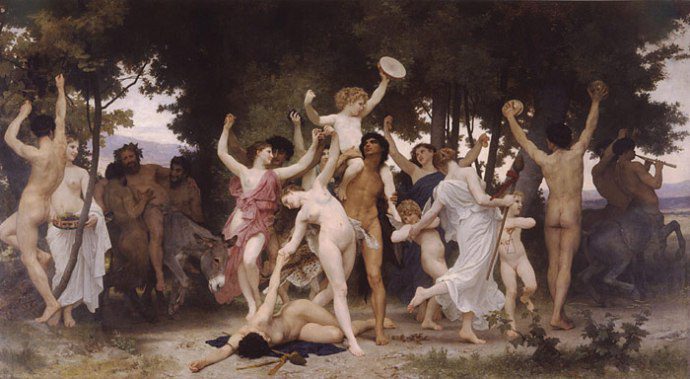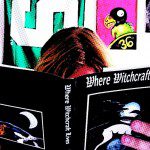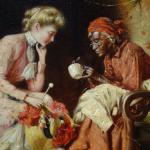The modern Scouting movement came this () close to being one of the Twentieth Century’s great incubators of Contemporary Paganism. Many of Scouting’s earliest splinter movements have recognizable Pagan elements, recognizable to us anyways. I grew up in the Cub Scouts and was involved in the Boy Scouts up until high school, bowing out only when my younger brothers decided that it was too “uncool” to participate in. My step-mother then informed me that she wouldn’t be providing “only Jason” with a ride into town for Scout meetings. I was two steps away from my Eagle badge too, with years to spare.
Though I didn’t like to share that I was a Boy Scout with anyone at school, I generally loved scouting. I liked camping, hiking, and being out in the woods. One of the most amazing experiences I’ve ever had in nature (and by extension one of the most pagan) happened while I was a Boy Scout. It was late September in western Virginia up in the Appalachian mountains and Summer’s golden halo was giving way to Autumn’s frost. Our hike that weekend had been long, and my entire troop’s spirits were dark. That Sunday our Scout Master let us hike at our own pace, creating a ragged and exhausted line of teenage boys up and down two miles of the Appalachian Trail.
I remember walking up a rather steep hill and coming out near the top of a fairly wide meadow. It was late morning, just a touch of dew left on the ground and a sky full of glorious shining sun. Stepping into that meadow was like stepping into the middle of a dream. For about twenty minutes it was just my brother and I walking through the greenest green. Above us we could actually see a little bit of ice in a dark spot of the mountain, and growing everywhere around us were wild blueberries. The path we were walking on was clear of debris, but the berries were so close we picked them as we walked. If I had gotten nothing out of ten years of Scouting but those few moments it would have been worth it. I will take that experience with me to the grave.
There’s a lot of what feels “military” in today’s Boy Scouts, but it wasn’t always like that. In the United States the Scouting movement began with Ernest Thompson Seton, and his Scouting was radically different from what would follow in its wake. Setton’s Scouts focused on woodcraft, outdoor skills, and a deep and abiding love of the natural world. Seton’s version of Scouting was what I liked most about the Boy Scouts. Setton’s Scouting was also infused with the (for lack of a better term) white man’s version of Native American Spirituality. Setton spoke of the “Great Spirit” in nature, all while trying to keep his creation compatible with and acceptable to Modern Christianity. Seton first printed his ideas on Scouting in 1902 in the book The Birch Bark Roll of the Woodcraft Indians. (The book its self was an extension of some magazine articles he had written previously.)
In 1906 Setton met with William Baden Powell, an English war hero who began his own version of the Scouts. For several years the two joined forces in England and Scouting spread around the world. Sadly it was Powell’s version of the movement that became predominant. Powell’s Scouts used the military as an organizational model, while Seton’s interpretation was more tribal. Eventually Seton and Powell had a falling out over World War One and Seton left the Scouts.
Even though Powell’s take on Scouting was a bit more rigid than Seton’s his group still retained a bit of the pagan that I find so tantalizing. Nature was referred to as “Mother” and sometimes “Mistress.” While it seems as if Christianity is essential to the Boy Scouts, Powell was a true believer in interfaith and wanted his movement open to various religious groups. As a result of that inclusion Jesus often took the role of teacher instead of “Son of God.” The Boy Scouts kept some of the Native American elements as well, and to this day The Order of the Arrow remains an important part of the organization. In the early years of Boy Scouting the organization was sometimes criticized for leaving out Jesus. Even though Powell kept some of Seton’s mysticism, it was a minuscule amount. Seton’s “woodcraft” whispered to a world full of spirits and natural powers. Some of his critics even described it as “animist.”
After Seton left the Boy Scouts splinter organizations formed that were more in line with Seton than Powell. One of the earliest groups (1920-1951) was Kibbo Kift, and it was designed specifically to reunite young men with the natural world. Kibbo Kift didn’t limit its self to just expressions of Native American Spirituality and Western Monotheism it incorporated folklore and rituals from Africa and Polynesia. The group’s founder, John Hargrave (himself a former administrator of Powell’s Scouts) once joked that at a Kibbo Kift campsite “they daren’t even light a fire without chanting a heathen enchantment over it.” Over time the group also began using some ideas borrowed from Masonic Ritual, including things like blindfolded initiations.
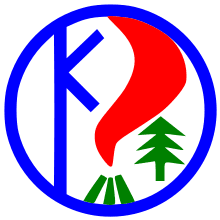 While Kibbo Kift certainly sounded inviting, for a very brief period of time there was another offshoot of the Boy Scouts that was even more intriguing. That organization, The Order of Woodcraft Chivalry, was nearly a proto-pagan group, and probably included a few folks who actively thought of themselves as pagan. Most of that occurred between 1923 and 1925, but I’m getting a bit ahead of myself. Before writing about The Order of Woodcraft Chivalry in the early 1920’s it’s important to write a little bit about the group’s founder, Ernest Westlake.
While Kibbo Kift certainly sounded inviting, for a very brief period of time there was another offshoot of the Boy Scouts that was even more intriguing. That organization, The Order of Woodcraft Chivalry, was nearly a proto-pagan group, and probably included a few folks who actively thought of themselves as pagan. Most of that occurred between 1923 and 1925, but I’m getting a bit ahead of myself. Before writing about The Order of Woodcraft Chivalry in the early 1920’s it’s important to write a little bit about the group’s founder, Ernest Westlake.
Westlake (1855-1922) was originally a Quaker, and a devout one, but by the beginning of the Twentieth Century he had begun moving away from Christianity. Westlake was an amateur archeologist and had a keen interest in psychic phenomenon. Eventually he began defending historical witchcraft and once remarked to an Anglican Bishop that women should be “regarded as an incarnation of God” and “worshipped in spirit and in truth.” Eventually his religious curiosity led him to Hellenic Religion and as he developed his Order of Woodcraft Chivalry he dubbed Dionysus, Pan, and Artemis” as his “Woodcraft Trinity.” He also made room for Aphrodite on several occasions and believed that treating sex and alcohol as sacred would limit anyone abusing either.
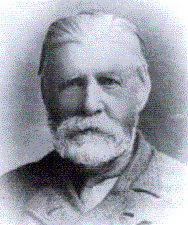 Westlake’s Order was officially founded in 1916, as another reaction to Powell’s militarism, and was ambitious from the start. Westlake envisioned a forest park for his group, full of buffalo and other big game animals. I can imagine the vigorous Westlake living in such an environment, capturing some true outdoor-tribal-pagan energy. Sadly Westlake would die in 1922 before he got to put together his park, but that previous Summer he did participate and lead an extremely pagan-like ritual for his Order at Lammas at his estate (named Sandy Balls.) And yes it really was called Sandy Balls, and Sandy Balls still exists to this day. When I do this as a lecture the name always draws a few chuckles.
Westlake’s Order was officially founded in 1916, as another reaction to Powell’s militarism, and was ambitious from the start. Westlake envisioned a forest park for his group, full of buffalo and other big game animals. I can imagine the vigorous Westlake living in such an environment, capturing some true outdoor-tribal-pagan energy. Sadly Westlake would die in 1922 before he got to put together his park, but that previous Summer he did participate and lead an extremely pagan-like ritual for his Order at Lammas at his estate (named Sandy Balls.) And yes it really was called Sandy Balls, and Sandy Balls still exists to this day. When I do this as a lecture the name always draws a few chuckles.
Westlake’s Lammas Ritual in 1921 contained several elements many Modern Pagans would recognize. The four directions were called, and were linked to a color correspondence familiar to many of us. He read a short invocation to Pan originally written by Socrates: “Beloved Pan, and all ye other gods who haunt this place, give me beauty in the inward soul; and may the outward and inward man be at one.” He also created a special “Sun Lodge” with a degree system for those seeking the higher spiritual mysteries in the Order (most certainly borrowed from Freemasonry). It wasn’t quite Pagan as I know it today, but I’m sure I would have felt at home.
In Triumph of the Moon Ronald Hutton asks the question of “Was Westlake a Pagan?” I feel like one could make a pretty convincing case for “yes” (especially in a world with Christo-Pagans) but it’s not quite that simple. Westlake once wrote that: “one must be a good pagan before one can be a good Christian” and I think that line sums up his philosophy pretty well. He wasn’t a traditional Christian by any means, but he couldn’t quite turn his back on it completely. He looked to Paganism to “fill in the gaps” so to speak. Paganism provided mysteries and a link to nature that he just couldn’t find in contemporary Christianity, even his Quaker brethren. Speaking of the Quakers, they were comfortable enough with Westlake that the Society of Friends endorsed his movement. Westlake’s belief that Jesus dissolved into nature at his time of death was apparently fine, though some Quakers saw the Devil in Dionysus.
Westlake was capable of navigating the Christian and the Pagan successfully, sadly his successor in 1923, Henry “Dion” Byngham was not (and yes, the Dion is short for Dionysus). Though Byngham was removed from leadership within the Order in 1925 his short tenure was fascinating, because Byngham was very much the Pagan and had little tolerance for Christianity inside of Woodcraft Chivalry. In a magazine article unrelated to the Order Byngham advocated worship of the phallus as a way to venerate the life-force.
Becoming the leader of the Order also meant editing Woodcraft Chivalry’s official magazine, The Pinecone and Byngham used it to the best of his ability to share his Pagan leanings. In one article he wrote that: “life springs out of the star-tissued womb of Nature as the virile son of the All-Mother” a line so good that I’m going to steal it for ritual. His second issue as editor featured a nude Dionysus on the cover, not completely scandalous but it’s worth remembering that the magazine was directed at adolescent boys. Perhaps his greatest triumph was The Pinecone’s fourth issue which featured a nude Byngham on the cover playing the panpipes while his girlfriend danced in a Grecian tunic above him, with one breast exposed for all the world to see. Boy’s Life Byngham’s magazine was not, and he was subsequently removed from the magazine and his leadership role in the organization.
I think I would have loved Byngham’s version of the Order. He once wrote that he saw Woodcraft Chivalry as: “a leaping and dancing movement of modern Bacchae through the land, symbolically the order should be proud to regard its self as the erect penis of the social of which it is a part.” He was an advocate of nudity in ritual and once danced naked with his girlfriend in honor of the “sun god” at Sandy Balls. Byngham’s full throttled paganism resulted in the organization separating its self from European “pagan elements” replacing them with the more benign white person interpretation of Native-American spirituality. Byngham later joined a few other naturist groups and by the 1960’s was on Doreen Valiente’s Christmas Card list! What comes around, goes around.
Some have looked to the Order of Woodcraft Chivalry as a template for Modern Witchcraft. Westlake’s estate, Sandy Balls, was close to Gerald Gardner’s base of operations in New Forest England and it’s not out of the realm of possibility that some paths were crossed, but it still seems unlikely. There’s nothing linking Gardner to Woodcraft Chivalry, but the geography and period of time are tantalizingly close. I am rather sure that Westlake and Gardner did share some influences: Freemasonry and a particular Victorian yearning for the natural world. As the website Controverscial points out Westlake’s Order did share some similarities with Modern Wicca: the circle, spirits at the four quarters, calling to a deities/spirit, drums and dancing, and a small sharing of food and drink.
For me there will always be a little bit of sadness for what Scouting could have been. Certainly in it’s most popular interpretations it’s difficult to see it as a full fledged Pagan-petri dish, but I would have loved it to have retained a little more paganism at its edges. In the spirit of Kibbo Kift and The Order of Woodcraft Chivalry there’s the Spiral Scouts so not all is lost, but honoring Pan, Dionysus, Aphrodite and Artemis at a place called Sandy Balls will always be a nice day dream. At the very least I’ll always have those blueberries.
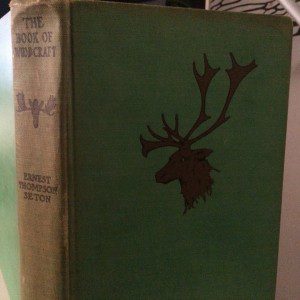 (I’ve got a lot on my plate right now so posting at Raise the Horns is kind of an uphill challenge. This particular piece comes straight from the lecture notes of a workshop I did this past Winter called Magic and Paganism in Britain: 1800-1923 which is why it doesn’t have any footnotes. I can tell you that my primary source was Ronald Hutton’s Triumph of the Moon, and the website Controverscial was also a great help. The rest of it came from historical scraps collected over the last fifteen years. I was a Boy Scout up until I was 15, and always had a keen interest in the movement’s history so some of that came in to play here too.)
(I’ve got a lot on my plate right now so posting at Raise the Horns is kind of an uphill challenge. This particular piece comes straight from the lecture notes of a workshop I did this past Winter called Magic and Paganism in Britain: 1800-1923 which is why it doesn’t have any footnotes. I can tell you that my primary source was Ronald Hutton’s Triumph of the Moon, and the website Controverscial was also a great help. The rest of it came from historical scraps collected over the last fifteen years. I was a Boy Scout up until I was 15, and always had a keen interest in the movement’s history so some of that came in to play here too.)
Do you like Raise the Horns? Even if you don’t would you be interested in humoring me? Like us on Facebook, and also like Patheos Pagan for more great articles just like this one. All you gotta do is click on those links.
PHOTOS
1. Leaf Pentacle by Kathryn Huxtable
2. Blueberry Bush
3. Ernest Thompson Seton (left) William Baden Powell (sitting) Daniel Beard (right, another early Scout pioneer, his group “The Sons of Daniel Boone” later merged with the Boys Scouts of America)
4. Sort of what I think about when I picture a Boy Scout, that or my friend Carl.
5. The logo of Kibbo Kift
6. Ernest Westlake
7. Not Dion Byngham
8. A scout from the 1911 edition of the Boy Scout Handbook
9. My copy of Seton’s The Book of Woodcraft, yup I’m that nerdy.



